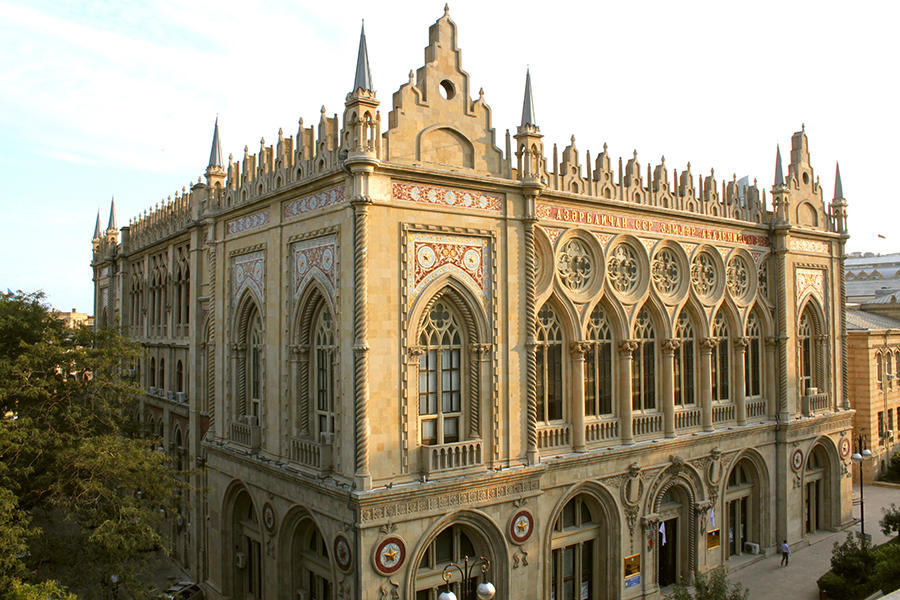Baku is a city where the combination of eastern and western culture gave the capital beautiful architectural monuments. The end of the XIX – the beginning of the XX century was remembered by the grandiose buildings that formed the unique appearance of the capital. The oil boom was accompanied by the emergence of a large stratum of wealthy industrialists who dreamed of turning Baku into a European city. To build their mansions, they invited the best foreign architects – they were commissioned to create here a piece of Venice or Paris. Constructed in baroque or Gothic styles, the buildings still delight tourists today who compare the Azerbaijani capital with European cities.
İsmailiyya Palace
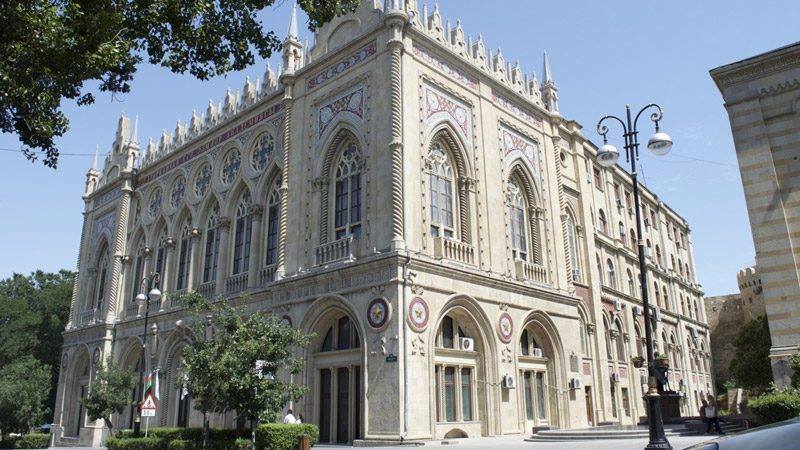
This building was built by the Baku millionaire Musa Nagiyev in memory of his untimely dead son Ismail. The architect of the building, erected in the style of Venetian Gothic, was the Polish Joseph Ploshko. In “Ismailia” he embodied the architecture of the Venetian palace of Ka Dor with its golden decor and multicolored marble. Although it was the first work of Ploshko in Baku, the magnificent palazzo “Ismailia” immediately moved into the first rows in the city’s architecture . After the ceremonial opening of Ismailia in 1913, meetings of members of the Muslim Charity Society, a meeting of Muslim women, the Baku intellectuals , congresses of the clergy took place in its spacious white-stone assembly hall with windows facing Nikolayevskaya street. Today the Presidium of the Academy of Sciences of Azerbaijan is located here.
Baku Wedding Palace: Murtuza Muktarov’s Residence-Palace of Hapiness
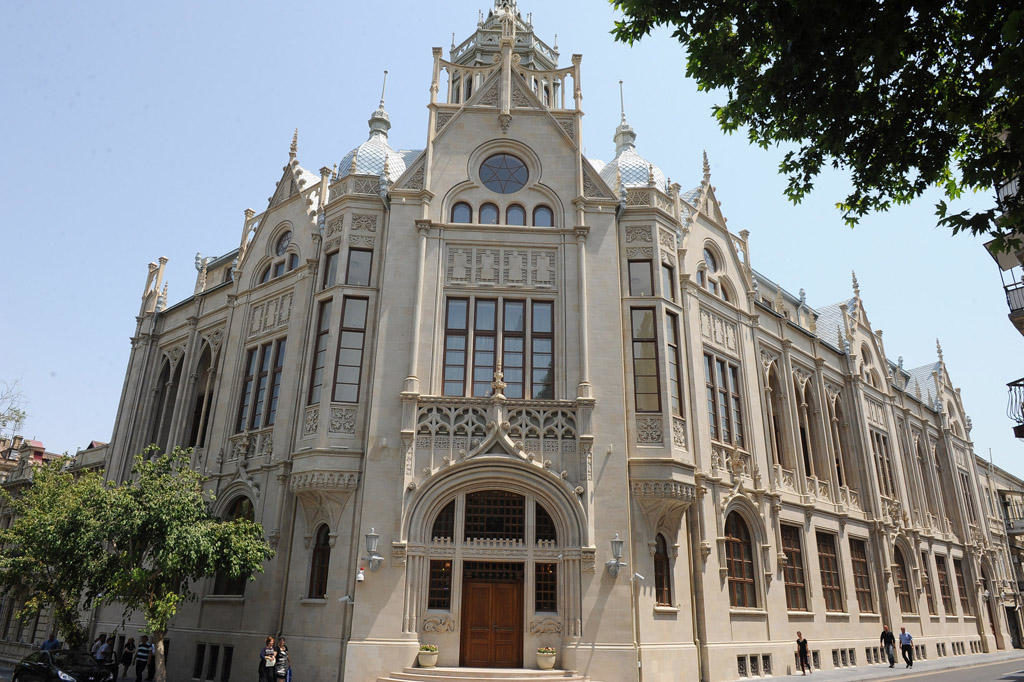
This palace was built by the Baku millionaire Murtuza Mukhtarov for his wife Lisa Tuganova. The building became a copy of the Venetian Palazzo de Lodge, from which his wife, with whom he traveled through Venice, was delighted. For the project took the same Joseph Ploshko, who a year later presented an unusual building in the spirit of French Gothic. The building of the palace appears in front of the viewer in the form of a central corner tower part, above which is installed a large figure of the Polish knight. If “Ismailia” observes the monumentality of the image, then the lightness and grace of the French Gothic are fully revealed. Despite the fact that the building was built with great love, there were two great misfortunes in it. During the erection of the palace, one of the contractors was killed, and several years later, when the Bolsheviks wanted to requisition Mukhtarov’s house, the millionaire shot the envoys here, leaving the last bullet for himself. Today in this building is the Wedding Palace.
National Art Museum of Azerbaijan
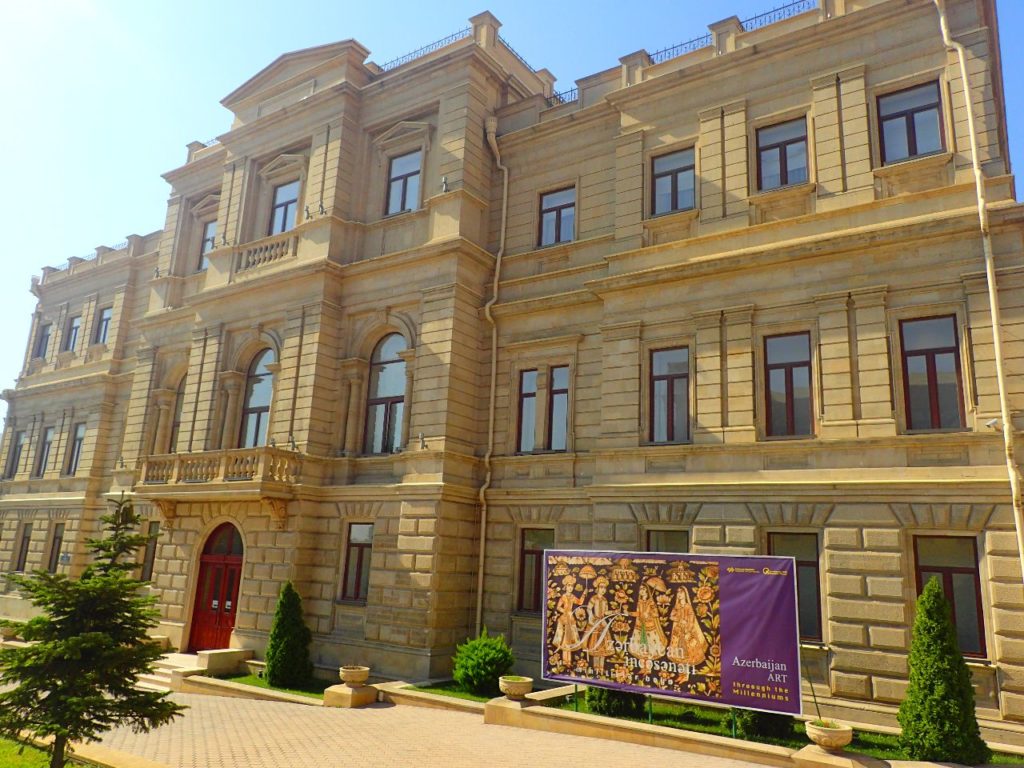
The mansion of the oil industrialist and the founder of the joint-stock company “Caspian Partnership” Leva de Bura was built in 1895 by civil engineer Nikolai von der Non. The house of Deborah became a supporting structure for subsequent re-planning of the adjacent part of the city territory. This building is considered to be the only historical building in Baku, which is perceived in three dimensions among the planar perimeter building. It is believed that the mansion DeBur in the capital has a rare quality – it is perfectly monitored. These positive features of the building became even more felt after the reconstruction of the environment and the creation of a park in the 1930s. In 1951 the palace moved to the Museum of Art, where it is located to this day.
Azerbaijan State Philharmonic in Baku, Azerbaijan named after Muslim Magomayev

OLYMPUS DIGITAL CAMERA
This building was built as the “Summer House of the Public Assembly,” in which the rich could spend their free time. Its construction was entrusted to the engineer Gabriel Ter-Mikelov and for this purpose was specially sent to Monte Carlo to get acquainted with the local architecture. Inspired by the Monte Carlo Casino building, the architect built something similar in Baku. Already in 1912, the Summer House delighted the views of its first visitors – an abundance of terraces and verandas, it resembled an Italian villa of the Renaissance. After the establishment of Soviet power, music lovers began to gather in this building, and since 1936 the Azerbaijan State Philharmonic has been organized.
Azerbaijan State Academic Opera and Ballet Theater in Baku
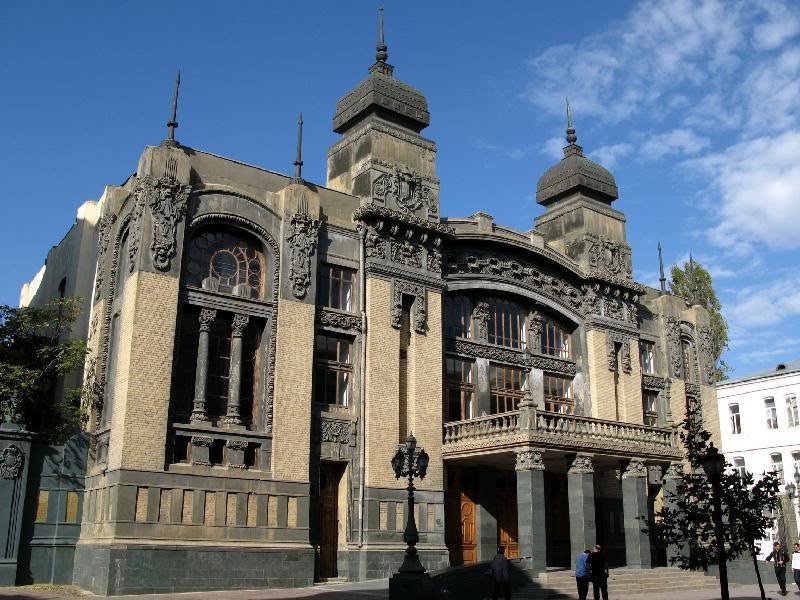
The building of the theater was built by the Russian architect Nikolai Baevy with the funds of the Baku millionaires, the Myilov brothers in just one year. A beautiful legend is associated with the history of the building. In 1910, Baku was visited by a famous singer, whose beauty and unparalleled voice fascinated one of the brothers Mailovykh. She gave concerts in the Exchange building, a casino and a circus and was indignant: “Why in your beautiful, rich city where such generous knights live, there is no opera house where singers could show their art.” When the singer left, Maillov persuaded her to return in a year and build by this time a building worthy of her art. In 1911, she was already performing at the opening of the theater building, performing a part in the opera Boris Godunov. Today there is the Azerbaijan State Theater of Opera and Ballet.
Executive Power of Baku city
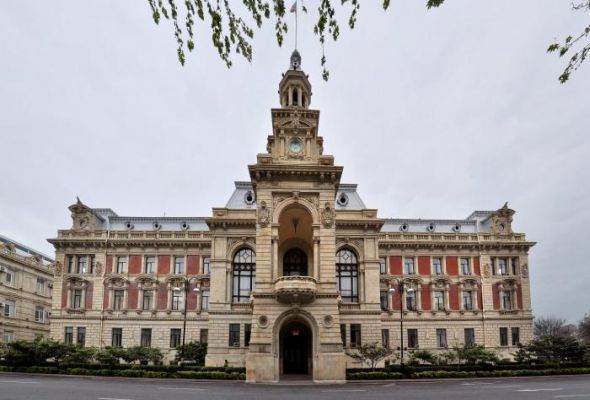
This beautiful, majestic building was built in 1904 by Polish architect Iosif Goslavsky. The administrative building was to give Nikolayevskaya street, which is in the formative stage, a large scale. When designing the Duma, Goslavsky did not spare his creative energy, and the city displayed an enviable generosity in the appropriations. The building of the Duma seemed to confirm the widespread opinion that Baku is a city of fabulous riches. Created in the Baroque style, the building is richly decorated with stone carvings with images of mythical animals. After the establishment of Soviet power, the Baku Council was located here, and today the Baku Executive Power.
House of Gadzhinsky in Baku

Prospect Neftyanikov – the former Aleksandrovskaya embankment – the most surveyed part of the city of Baku, was ideally suited for the construction of beautiful buildings. As did the oilman Isa bey Gadzhinsky, having built one of the most remarkable mansions of pre-revolutionary Baku near the Maiden Tower. The composition of the facades of the palace is saturated with rich plastic, three-dimensional elements, including balconies, bay windows and loggias. In a building with a corner setting dominates the fabulously beautiful tower-rotunda, crowning the corner bay window. In the Soviet years, this house was mainly occupied by party workers and scientists. During the Second World War, in November 1944, on the way from Tehran to Moscow, General Charles de Gaulle stayed here.
Baku Evangelical-Lutheran Church- known as Church of Saviour

ChurchEvangelical-Lutheran Church – it is also called the Church of Salvation or simply the Baku church. The architect of the building, which was built in the Neo-Gothic style, was the 24-year-old German Adolf Eichler. There is an opinion that the construction of the architect was inspired by the church of St. Elizabeth in Marburg, Germany. At one time this building was considered one of the rare architectural pearls of the city of Baku. Its construction began in 1896, and four years later the first concert of organ music was held here, at which works of Johann Sebastian Bach were performed. At present, the concert hall of the Ministry of Culture and Tourism of Azerbaijan is located in the building of the church.
Taza Pir Mosque in Baku

The construction of the first cathedral mosque marked a completely new stage in the development of religious buildings. The interior of the mosque is decorated with patterns of the Azerbaijani school of painting and rare examples of oriental ornaments, and its dome is made of marble. It was erected on the site of an old one-storeyed mosque designed by architect Ziverbek Ahmedbekov. The new mosque was built on the means of patron of arts Nabat Khanum Ashurbekova Rzaeva, who did not live to finish the construction. The mosque was opened in 1914, but it operated only three years. During the October Revolution, it was closed and used as a cinema and barn. Only since 1943 it began to function as a mosque. On the territory of Tezepir there is a building of the Office of Muslims of the Caucasus.


